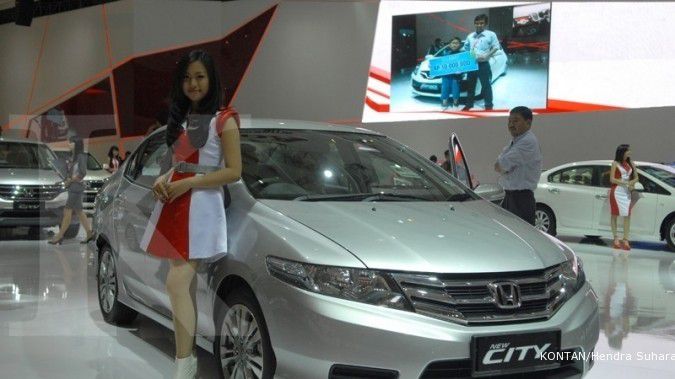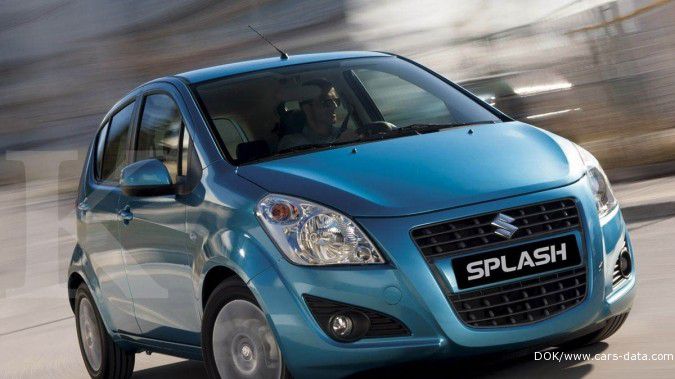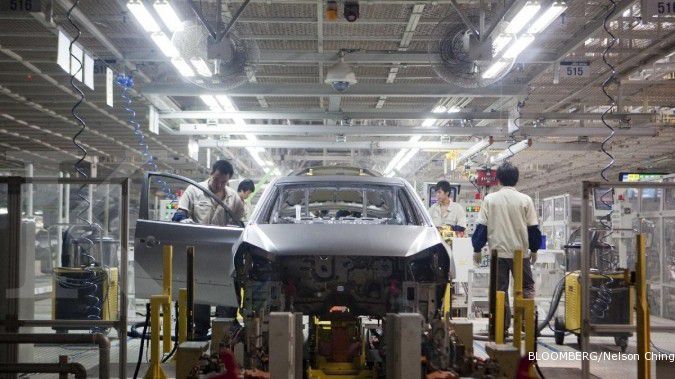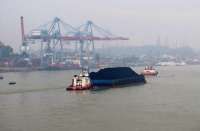JAKARTA. Indonesia, driven by its growing car market, looks to be heading toward becoming an important automobile-production hub, not only for its own market, but also for other developing countries.
Despite higher interest rates and surging production costs, car sales expanded higher than expected in the first quarter of this year to 328,254 units, a 10.93 percent year-on-year increase, according to the Association of Indonesian Automotive Manufacturers (Gaikindo).
If such a quarterly-growth rate continues throughout this year, sales may surpass the industry’s annual target of around 1.2 million units — the same figure as recorded last year.
“The rapidly growing domestic automotive market has created an opportunity for Indonesia to become an automotive production base not only in Southeast Asia but also beyond, to cover the Middle East and Africa,” said Economic Research Institute for ASEAN and East Asia senior policy coordinator Yoshifumi Fukunaga.
He added that with larger production capabilities, the industry would be able to reduce costs and improve efficiency.
Strong sales growth, driven by the purchasing power of the emerging middle class, will enable local car manufacturers to further increase production capacity, which would in turn, also encourage the entry of more autoparts suppliers into the domestic market.
At present, Indonesia now has only 800 autoparts suppliers, much lower than the 2,300 suppliers in Thailand, the region’s current automobile production base.
Led by market leader Toyota, Indonesia has now exported sedans, as well as sports utility and multi-purpose vehicles to more than 70 countries worldwide. Car exports, which reached US$4.45 billion last year, are expected to rise by 10 percent this year, driven by surging demand in existing markets like Thailand, Saudi Arabia, the Philippines, Japan and Malaysia.
Government officials are even more upbeat. They estimate exports may potentially double to around $9 billion in 2017 as the expansion of existing facilities and the opening of new plants would make locally-assembled cars more competitive in foreign markets.
To become an export hub for a particular type of vehicle, the automotive industry needs a sizeable domestic market, said Frost & Sullivan associate director of the automotive and transportation division for Asia Pacific, Dushyant Sinha. Indonesia can, for example, become the production hub for four-seat minivans — the so-called low-cost green car (LCGC) — if the 1,000 cc cars are able to attract demand in the domestic market.
Thailand, which has already begun producing a similar type, sells half of its eco-car output domestically.
“It will be easier for Indonesia to export LCGC cars in the long run since the cars will likely able to control the large segment of the local car market,” Sinha said.
Less than 5 percent of Indonesia’s population of about 240 million own vehicles. To boost the size of the domestic market, the government removed the luxury tax last year on cheap cars sold at Rp 100 million ($8,800) each, a benchmark considered affordable to the masses, which will help the world’s fourth-populous nation achieve 2 million unit sales by 2017 as estimated by industry officials.
Indonesia’s potential to become the next automobile production hub, nevertheless, could be eroded by, particularly, the absence of government incentives for exports, inefficient logistics and poor infrastructure.
Indonesia rides its way to being next auto hub
April 14, 2014, 11.10 AM
/2013/09/20/449665717p.jpg)
ILUSTRASI. Aplikasi Record Layar Laptop Gratis dan Fitur Lengkap, Cara Menggunakan OBS Studio
Source: The Jakarta Post
| Editor: Asnil Amri
Internasional
Internasional
Latest News
-
January 08, 2026, 06.57 PM
Indonesia's 2025 Budget Deficit at 2.92% of GDP Nears Legal Ceiling
-
January 08, 2026, 01.37 PM
Indonesia to Set 2026 Coal Output Quota at Around 600 Million Tons, Minister Says
-
January 08, 2026, 12.43 PM
Indonesia Consumes 14.2 Million Kilolitres of Palm-Based Biodiesel in 2025, up 5.2%
-
January 07, 2026, 05.22 PM
Indonesia May Seize Another 5 Million Hectares of Palm Oil Plantations in 2026
-
January 06, 2026, 06.18 PM
European Stocks Rise, Dollar Steadies as Markets Look Past Venezuela Turmoil
-
January 05, 2026, 04.18 PM
Ex-Indonesian Minister Makarim Faces Graft Charges Over Google Laptop Procurement
-
January 05, 2026, 03.20 PM
Indonesia's January-November Palm Oil Export Volume Up 4.3% Y/Y
-
January 05, 2026, 03.14 PM
Indonesia Trade Surplus Less than Forecast, Inflation Quickens
-
January 05, 2026, 12.33 PM
Asian Stocks Hit Early 2021 Highs as AI Optimism Outweighs Venezuela Risks














